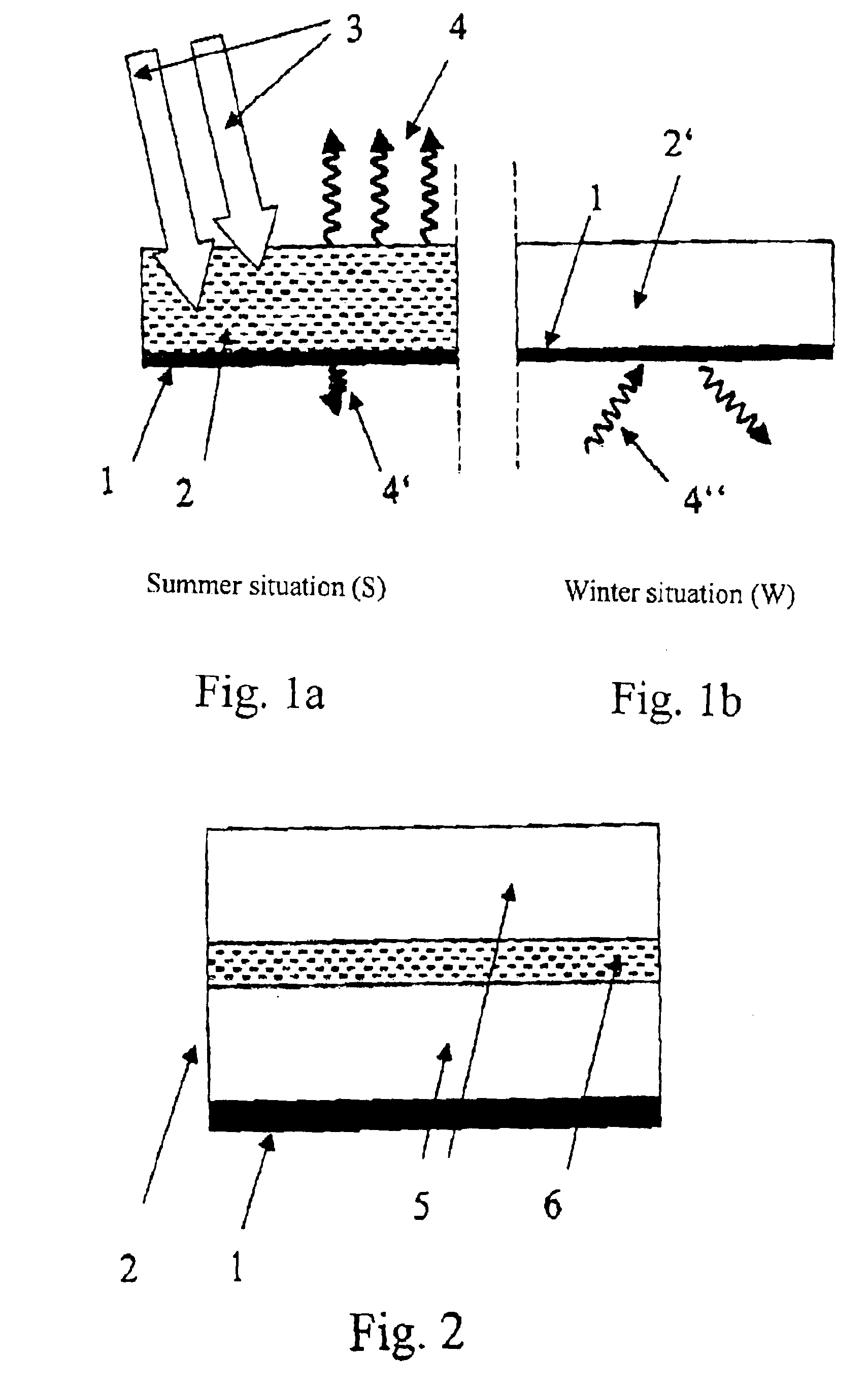Thermally comfortable glass
a technology of comfortable glass and thermal insulation, applied in the field of thermal insulation glass, can solve the problems of poor thermal insulation properties, darkening the vehicle interior, and proximity of uncomfortable “cold-radiating” surfaces, and achieve the effect of improving the thermal comfort of the vehicle passengers and improving the thermal comfor
- Summary
- Abstract
- Description
- Claims
- Application Information
AI Technical Summary
Benefits of technology
Problems solved by technology
Method used
Image
Examples
Embodiment Construction
[0021]As shown in FIG. 1a, in the summer situation S, the glazing includes darkened glass 2 and a function layer made of LE material 1 having incident sunlight 3, infrared radiation 4 emitted by the glass, as well as infrared radiation 4′ emitted by function layer 1. In the winter situation W shown in FIG. 1b the glazing includes non-darkened glass 2′ as well as infrared radiation 4″ reflected at function layer 1. The schematic structure shown in FIG. 2 includes two panes 5, an SPD film 6, and the function layer made of LE material 1.
[0022]In the summer situation S, the self-darkening glass is darkened by an external electrical pulse, which reduces the transmission of the sunlight heating the interior to a low percentage. In closed vehicles, the heating of the glass due to absorption may raise temperatures to above roughly 80° C. Temperatures between 70 and 80° C. are easily reached, in particular in the area of the roof glazing. The radiation temperature and the radiated thermal en...
PUM
| Property | Measurement | Unit |
|---|---|---|
| thickness | aaaaa | aaaaa |
| wavelength | aaaaa | aaaaa |
| wavelengths | aaaaa | aaaaa |
Abstract
Description
Claims
Application Information
 Login to View More
Login to View More - R&D
- Intellectual Property
- Life Sciences
- Materials
- Tech Scout
- Unparalleled Data Quality
- Higher Quality Content
- 60% Fewer Hallucinations
Browse by: Latest US Patents, China's latest patents, Technical Efficacy Thesaurus, Application Domain, Technology Topic, Popular Technical Reports.
© 2025 PatSnap. All rights reserved.Legal|Privacy policy|Modern Slavery Act Transparency Statement|Sitemap|About US| Contact US: help@patsnap.com


